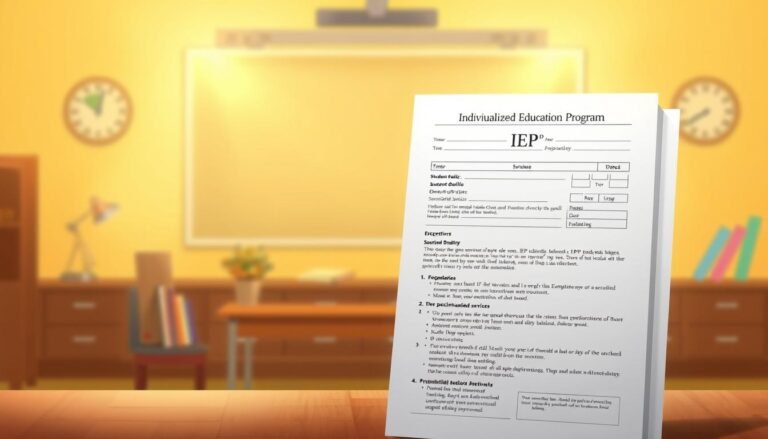The Road Less Traveled: Navigating Spelling Education for Students with Learning Disabilities
Introduction
In a world where literacy is a cornerstone of learning and communication, the journey to mastering spelling often presents unique challenges, especially for students with learning disabilities. The need for effective and compassionate education strategies is not just important—it’s essential. This article, The Road Less Traveled: Navigating Spelling Education for Students with Learning Disabilities, dives deep into innovative approaches that can transform the spelling experience for these students, offering them the opportunity to shine academically and socially.
Understanding Learning Disabilities and Their Impact on Spelling
What Are Learning Disabilities?
Learning disabilities (LD) encompass a range of neurological disorders that affect the brain’s ability to process, store, and respond to information. This includes challenges in reading, writing, math, and spelling. It’s crucial to understand that learning disabilities do not reflect a person’s intelligence; rather, they reveal a different way of processing information.
| Type of Learning Disability | Description |
|---|---|
| Dyslexia | Difficulty with reading, particularly in decoding words. |
| Dysgraphia | Challenges with writing, including spelling and organization. |
| Dyscalculia | Difficulty with numbers and arithmetic. |
Spelling: A Unique Challenge
For students with learning disabilities, spelling can be particularly frustrating. The traditional methods of teaching spelling often rely on rote memorization, which may not resonate with someone who processes information differently. Instead, educators must embark on the road less traveled, creating a personalized path that accommodates these unique learning differences.
Case Study: Jamie’s Journey
Jamie, a 10-year-old diagnosed with dyslexia, struggled with spelling tests in her fourth-grade class. Traditional strategies left her feeling defeated. However, after being introduced to phonetic spelling techniques and multisensory learning, Jamie began to see improvement. Her new approach focused on sound recognition and tactile activities, allowing her to engage with words differently.
Analysis
Jamie’s story exemplifies how tailored strategies can lead to breakthroughs in spelling education for students with learning disabilities. This case underlines the importance of adaptability, showcasing how unique approaches can foster engagement and success.
Innovative Strategies for Spelling Education
1. Multisensory Approaches
Multisensory learning engages multiple senses to help students grasp concepts. This approach is especially vital for students with learning disabilities, as it caters to various learning styles. By incorporating sight, sound, and touch, educators can create a richer learning experience. Techniques may include:
- Writing on Sand: This tactile approach allows students to physically shape letters, reinforcing learning through muscle memory.
- Color-Coded Systems: Using different colors for sounds can visually aid in decoding words.
2. The Rule of 20
The Rule of 20 suggests that students should focus on mastering 20 words at a time. This manageable approach reduces overwhelm and encourages focused learning. Here’s how it works:
| Step | Action |
|---|---|
| 1 | Choose 20 relevant words. |
| 2 | Introduce them using multisensory methods. |
| 3 | Review and practice over a week. |
3. Using Technology
The digital age offers a myriad of tools designed to aid learning. For students with learning disabilities, technology can serve as a crucial ally:
- Speech-to-Text Software: Helps students who struggle with writing by allowing them to verbalize their thoughts.
- Interactive Apps: Educational apps that focus on spelling through games can be both engaging and effective.
Case Study: Alex’s Transformation with Technology
Alex, a high school student with dysgraphia, found it difficult to write essays due to his spelling challenges. By integrating speech-to-text software into his learning routine, he was able to express his ideas without the barrier of spelling. His grades improved significantly, demonstrating the powerful impact of technology.
Analysis
Alex’s experience highlights how embracing modern tools can create inclusive learning environments that promote academic success, reinforcing the importance of such strategies in The Road Less Traveled: Navigating Spelling Education for Students with Learning Disabilities.
Creating an Inclusive Classroom Environment
The Role of Educators
Educators play a pivotal role in establishing a learning culture that embraces diversity and fosters support. Here are some essential strategies:
- Professional Development: Ongoing training for teachers about learning disabilities can enable them to recognize and address specific needs effectively.
- Collaborative Learning: Encouraging group work can help to normalize difficulties in spelling, allowing students to support each other.
Encouraging Parental Involvement
Parents are instrumental in their child’s education. By fostering an open line of communication between parents and educators, both parties can work together to support student success. Parents can be involved through:
- Regular Updates: Keeping parents informed about their child’s progress in spelling can lead to more targeted support at home.
- Workshops: Offering workshops for parents on effective strategies can equip them with tools to assist their children.
The Importance of Psychological Support
Building Confidence
Students with learning disabilities often face emotional hurdles alongside academic challenges. Prioritizing emotional learning is key. Strategies include:
- Positive Reinforcement: Celebrate small achievements to build confidence.
- Mindfulness and Relaxation Techniques: Help students manage anxiety related to spelling and tests.
Case Study: Sarah’s Resilience
Sarah, a student with a learning disability, faced significant anxiety surrounding spelling tests. Through counseling sessions and the incorporation of mindfulness techniques, she learned to manage her anxiety effectively, leading to improved performance and greater self-belief.
Analysis
Sarah’s progress is a testament to the holistic approach needed in The Road Less Traveled: Navigating Spelling Education for Students with Learning Disabilities. Addressing emotional well-being is just as important as academic support.
Data-Driven Insights
The Effectiveness of Tailored Approaches
Research demonstrates that customized educational strategies yield better outcomes for students with learning disabilities. A study showed that students who received opt-in multisensory instruction improved their spelling scores by up to 40% over one academic year.
| Teaching Strategy | Improvement Rate |
|---|---|
| Traditional Rote Learning | 10% |
| Multisensory Approaches | 40% |
| Technology-Enhanced Learning | 30% |
This data illustrates the profound impact of innovative teaching techniques, emphasizing the necessity of pursuing the road less traveled in spelling education.
Conclusion
Navigating the landscape of spelling education for students with learning disabilities is not merely a challenge; it is an opportunity for innovation. As educators, parents, and advocates, our responsibility lies in embracing diverse strategies that resonate with each unique learner. The journey requires patience, creativity, and a commitment to fostering environments where every child can thrive.
In pursuing The Road Less Traveled: Navigating Spelling Education for Students with Learning Disabilities, we should inspire one another to advocate for these students, ensuring they gain the confidence and skills necessary to succeed in literacy and beyond. Let us embark on this transformative path, guided by empathy and driven by the vision of an inclusive future.
FAQs
What are common learning disabilities that affect spelling?
- The most common include dyslexia, dysgraphia, and language processing disorder. Each manifests unique challenges related to reading and writing.
How can I help my child improve their spelling at home?
- Use multisensory techniques, incorporate engaging activities like word games, and maintain regular practice with manageable word lists.
Are certain teaching methods more effective for students with learning disabilities?
- Yes, multisensory approaches and technology-enhanced learning have shown significantly improved outcomes for students with learning disabilities.
Can parents play a role in their child’s spelling education?
- Absolutely. Parents can support learning through home practices, communication with teachers, and involvement in educational workshops.
- What resources are available for teachers looking to improve their strategies?
- Numerous professional development workshops, online courses, and educational conferences focus on innovative teaching strategies for students with learning disabilities.
In conclusion, the journey of educating students with learning disabilities in spelling is one that requires innovative paths, compassionate teaching, and a dedication to achieving meaningful outcomes. This exploration of The Road Less Traveled: Navigating Spelling Education for Students with Learning Disabilities is just the beginning of a journey filled with potential.
















